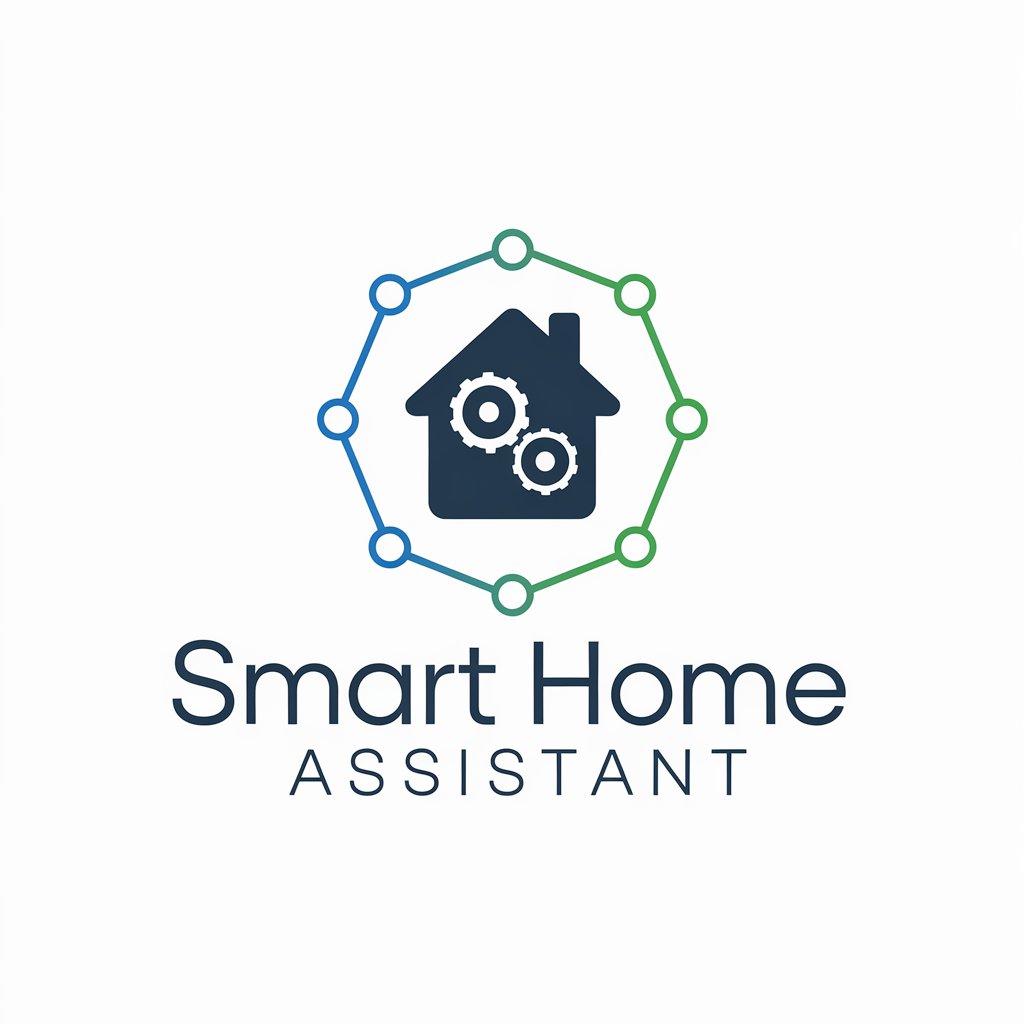
Home Assistant (HASS)-smart home control platform
AI-powered smart home made simple

Provides expert guidance on Home Assistant setup and troubleshooting.
How do I set up a new Lovelace dashboard?
Can you help me debug this YAML configuration?
What are the best practices for securing my Home Assistant setup?
Show me an advanced automation script for managing lights.
Get Embed Code
Detailed Introduction to Home Assistant (HASS)
Home Assistant OverviewCore Functions and Real-World Applications of Home Assistant
Device Integration
Example
Integrating Zigbee, Z-Wave, MQTT, Wi-Fi, and cloud-based devices like Google Home, Alexa, and SmartThings.
Scenario
A user connects Zigbee sensors via Zigbee2MQTT, their Wi-Fi smart plug via Tasmota, and a cloud-based weather integration to display current conditions in their dashboard. All device states are monitored and controlled centrally from Home Assistant.
Automation and Scripting Engine
Example
Creating automations using triggers (events or state changes), conditions (logical filters), and actions (services to call).
Scenario
A parent sets an automation where if their child’s phone connects to the home Wi-Fi after 3 PM on weekdays, the system disables the PlayStation smart plug and sends a notification to the parent’s phone. YAML or the UI can be used to create this logic.
Lovelace UI Customization
Example
Building custom dashboards using cards like entity, glance, history graph, and custom cards (e.g., mini-graph-card, button-card).
Scenario
A homeowner creates a wall-mounted dashboard displaying temperature sensors, security cameras, lighting controls, and presence detection with customized icons, colors, and conditional visibility based on the time of day.
Target Users of Home Assistant
Tech-savvy Enthusiasts and Developers
These users enjoy full control over their smart home setup and are comfortable writing YAML, using command-line tools, or debugging log files. They benefit from Home Assistant's open architecture, ability to run custom components, and its community support. These users typically create advanced automations, integrate DIY hardware like ESPHome or MQTT devices, and contribute to the platform.
Privacy-focused Homeowners and Local Control Advocates
This group values the local-first approach of Home Assistant, where automations and controls do not rely on cloud services. They benefit from the enhanced privacy, faster response times, and independence from corporate ecosystems. Home Assistant is ideal for users in rural areas with unstable internet, or those who prefer not to expose their home data to third-party servers.
Getting Started with Home Assistant (HASS)
Step 1: Access a Free Trial
Visit aichatonline.org for a free trial without login. No need for ChatGPT Plus—start exploring HomeHome Assistant Usage Guide Assistant guidance instantly.
Step 2: Install Home Assistant
Choose your preferred installation method—Home Assistant OS, Supervised, Container, or Core. The Home Assistant OS on a Raspberry Pi or NUC is recommended for beginners due to its ease and all-in-one functionality.
Step 3: Configure Your Devices
Connect and integrate smart home devices via the UI or YAML. Use Integrations to add Zigbee, Z-Wave, MQTT, and more. Ensure your devices are supported and on the same network.
Step 4: Create Automations and Scripts
Use the Automation Editor or write YAML-based automations for advanced logic. Trigger based on events, time, or device states to automate lighting, security, climate, and notifications.
Step 5: Optimize and Customize
Use LovelaceHome Assistant Setup Guide to create custom dashboards. Leverage add-ons like Node-RED and File Editor for visual scripting and easier configuration management. Monitor logs and use Developer Tools to debug issues.
Try other advanced and practical GPTs
イケハヤ副業相談bot
AI-powered advice with イケハヤ’s edge

News Article Writing
AI-powered journalism for clear, concise reporting
Oráculo Jurídico Contratações Públicas
AI-powered legal intelligence for public procurement.

Legis Expert di Studio Cataldi - AI di diritto
AI-powered legal guidance for Italian law

消除 AI 味
AI-powered rewrites that sound human.

TalGPT 💎
AI-driven outbound strategies for better sales.

Dynatrace GPT
AI-powered guidance for smarter Dynatrace usage

المكتبة الشاملة
AI-powered gateway to classical Islamic knowledge

Lofi音楽用アニメ画像作成ツール
AI-powered anime visuals for lofi vibes

音楽生成AI用楽曲マスター
AI-powered song prompts, lyrics & visuals

✍🏻 文案 | 高效產品文案
AI-powered content creation, made easy.

Bíblia - Análise Contextual e Textual
AI-powered Scripture analysis with original language insight

- Home Automation
- Energy Monitoring
- Device Control
- Security System
- Custom Dashboards
Common Questions About Home Assistant
What is Home Assistant used for?
Home Assistant is an open-source platform for home automation that allows users to control smart devices, create automations, monitor energy use, and manage home security systems—all locally and privately.
Can I use Home Assistant without writing code?
Yes. Home Assistant provides a user-friendly UI for most tasks including integrations, automations, and dashboards. Advanced users can use YAML for deeper customization, but it's not mandatory for basic setups.
What kind of devices can I connect?
Home Assistant supports thousands of devices from brands like Philips Hue, Nest, Sonos, Shelly, and Aqara via integrations like MQTT, Zigbee2MQTT, ZHA, and more.
How do I keep my Home Assistant secure?
Use HTTPS via DuckDNS and Let's Encrypt, enable multi-factor authentication, keep backups, and avoid exposing the instance directly to the internet without proper protection.
How can I debug issues in Home Assistant?
Use the Developer Tools to inspect entity states, fire events, and test services. Access log files via the UI or `config/home-assistant.log` to trace errors and performance issues.






